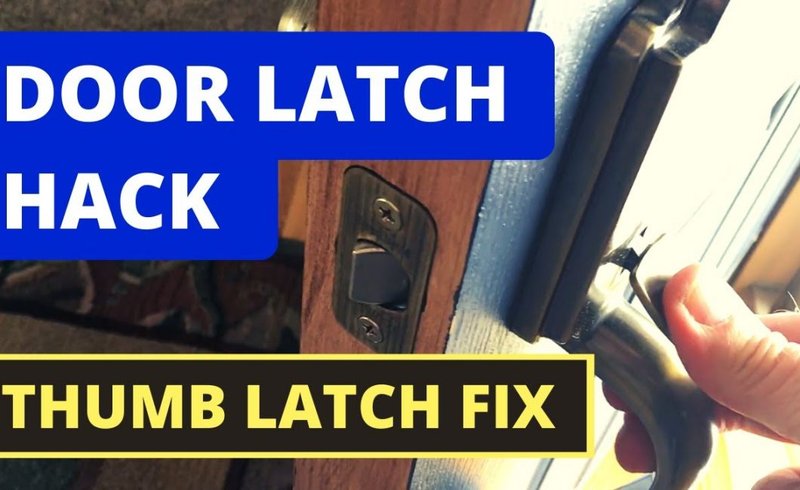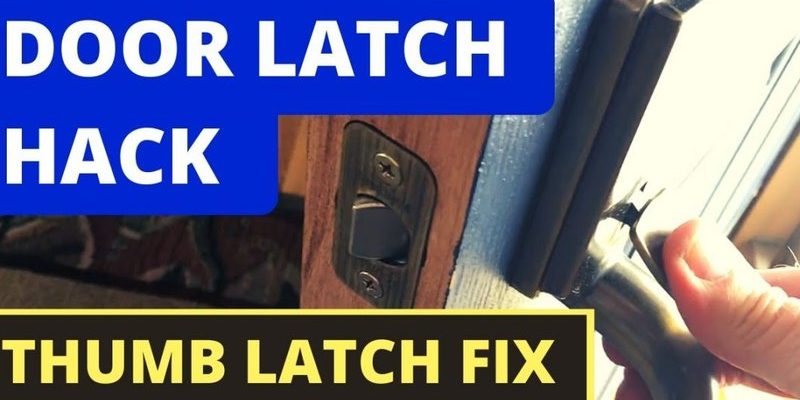
You might be dealing with a mechanical door latch, a common feature in many homes from brands like Schlage or Kwikset. Such issues can stem from a variety of causes like dirt, misalignment, or wear and tear. If you’ve found yourself wondering about this annoying problem, you’re not alone. Let’s dig deeper into the reasons behind a door latch not fully retracting and what you can do about it!
Common Causes of Latch Issues
When it comes to door latches, several factors can lead to them not fully retracting. Let me lay out some of the most common culprits:
- Alignment Problems: If your door isn’t aligned properly with its frame, the latch may struggle to retract completely.
- Dirt and Debris: Over time, dirt, lint, and other debris can accumulate in the latch mechanism, causing it to stick.
- Wear and Tear: Like any mechanical device, your door latch can experience natural wear over time, leading to decreased performance.
Understanding these factors is essential, as they often overlap. For instance, if your door is misaligned, it can create additional friction that leads to wear and tear on the latch over time. It’s a cycle that can be tough to break if you don’t get to the root cause.
Checking for Misalignment
One of the first things to assess is whether your door is properly aligned. A misaligned door might look fine to the naked eye but can create serious problems when it comes to the latch.
To check for alignment:
1. Close the Door: As you close it, observe whether there are gaps between the door and the frame.
2. Inspect the Hinges: Look at the hinges. If they’re loose or rusty, that could throw off the door’s alignment.
3. Test the Latch: With the door closed, see if the latch lines up with the strike plate on the frame. If it doesn’t, that’s a red flag.
If you notice any misalignment, you might need to adjust the hinges or even the strike plate to get everything back in working order.
Cleaning Your Latch Mechanism
Sometimes the issue can be as simple as gunk and grime. Just like how a key can get stuck in a dirty lock, your latch mechanism can falter if it’s not clean.
To clean your latch:
1. Remove the Latch: Use a screwdriver to take out the latch from the door.
2. Scrub It Down: Use a cloth or a soft brush to remove any dust or debris. Avoid using water to prevent rust.
3. Lubricate: A little bit of graphite or silicone spray can work wonders in helping the latch move smoothly.
Once you’ve cleaned and lubricated it, put everything back together and see if that helps with the retraction issue.
Understanding Wear and Tear
Wear and tear can occur more quickly in busy households, and your latch might simply be reaching the end of its lifespan. This is particularly true if you have children or pets that use the door more frequently.
Here’s how to tell if this is the case:
– Listen for Unusual Noises: If you hear grinding or rattling when you operate the latch, it might be worn out.
– Feel for Resistance: If the latch feels stiff or difficult to retract, that’s a sign it’s time for replacement.
If you suspect wear and tear, you might want to consider replacing the entire latch assembly.
Tools You Might Need
If you’re diving into any of the fixes mentioned, it’s handy to have some basic tools at your disposal. Here’s a quick list:
- Screwdriver: Essential for removing the latch.
- Lubricant: Either silicone or graphite spray for smooth operation.
- Cleaning Cloth: To wipe down any surfaces.
Having these tools ready can save time and make the task easier. Taking these small steps can have a big impact on your door’s functionality.
When to Call a Professional
While some issues can be solved with a bit of elbow grease, sometimes you need to call in an expert. If you’ve tried adjusting the latch and cleaning it, but it still won’t retract, it’s probably time for professional help.
Here’s when to consider calling a locksmith:
– Persistent Problems: If the door latch issue keeps coming back despite your best efforts.
– Complex Mechanisms: Some latches might be more complex than they seem, especially smart locks or electronic latches.
– Security Concerns: If the latch isn’t functioning properly, it can compromise your home’s security, which is a top priority.
A door latch that isn’t fully retracting can be a nuisance, but it’s a problem easily tackled with some simple troubleshooting. By checking for alignment issues, cleaning the latch mechanism, and understanding the signs of wear and tear, you can often resolve the problem without needing to replace the whole unit.
If all else fails, don’t hesitate to call a professional. Keeping your door functioning smoothly is not just about convenience; it’s about ensuring you feel safe and secure in your home. So, take a few minutes today and give that latch a little TLC—you’ll be glad you did!
